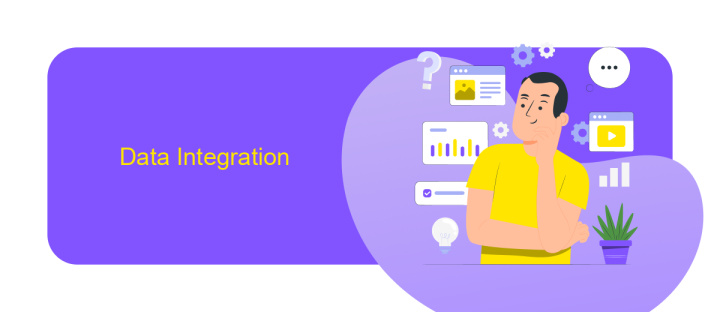ETL Project for Data Engineer
In the rapidly evolving field of data engineering, ETL (Extract, Transform, Load) projects are crucial for transforming raw data into actionable insights. This article delves into the key components and best practices of ETL processes, offering data engineers a comprehensive guide to efficiently manage and optimize data workflows, ensuring data integrity and accessibility across various platforms.
Introduction
ETL (Extract, Transform, Load) projects are foundational for data engineers in ensuring that data is accurately and efficiently processed. These projects involve extracting data from various sources, transforming it into a suitable format, and loading it into a target system for analysis and reporting. The goal is to create a seamless data pipeline that supports decision-making processes.
- Extract: Gathering data from multiple sources, such as databases, APIs, and flat files.
- Transform: Cleaning, normalizing, and enriching the data to make it useful for analysis.
- Load: Inserting the transformed data into a data warehouse or other storage systems.
Modern ETL projects often require integration with various services to automate and streamline the process. Tools like ApiX-Drive can be invaluable in this context, offering easy-to-use interfaces for connecting disparate systems and automating data workflows. By leveraging such services, data engineers can focus more on data quality and insights rather than the complexities of data integration.
Data Integration

Data integration is a crucial aspect of any ETL project, serving as the foundation for seamless data flow between disparate systems. It involves consolidating data from various sources into a unified view, ensuring consistency and accessibility across the organization. This process not only enhances data quality but also facilitates better decision-making by providing a comprehensive understanding of the data landscape. Effective data integration requires meticulous planning and the use of robust tools to handle the complexities of merging data from different formats and platforms.
One such tool that simplifies data integration is ApiX-Drive. This service allows for the effortless connection of various applications and systems, automating data transfer and synchronization tasks. By leveraging ApiX-Drive, data engineers can streamline the integration process, reducing manual efforts and minimizing errors. Its user-friendly interface and extensive compatibility with numerous applications make it an invaluable asset in any ETL project. Ultimately, leveraging tools like ApiX-Drive ensures that data integration is efficient, reliable, and scalable, paving the way for successful data-driven initiatives.
Data Transformation

Data transformation is a crucial step in the ETL process, where raw data is converted into a format suitable for analysis. This involves cleaning, normalizing, and enriching the data to ensure it meets the required quality standards. Effective data transformation ensures that the data is accurate, consistent, and ready for integration with other datasets.
- Data Cleaning: This step involves removing duplicates, handling missing values, and correcting errors in the dataset.
- Data Normalization: Standardizing data formats, units of measurement, and ensuring consistency across different data sources.
- Data Enrichment: Adding additional information from external sources to enhance the dataset's value and usability.
Utilizing tools like ApiX-Drive can significantly streamline the data transformation process. ApiX-Drive allows seamless integration with various data sources and automates many of the transformation tasks, reducing manual effort and minimizing errors. By leveraging such services, data engineers can focus more on data analysis and less on the tedious aspects of data transformation, ultimately leading to more efficient and effective data workflows.
Data Loading

Data loading is a critical phase in the ETL process, where transformed data is loaded into the destination system, such as a data warehouse or a data lake. This step ensures that the data is available for analysis, reporting, and further processing. Efficient data loading mechanisms are essential to maintain data integrity and performance.
To facilitate seamless data loading, it is important to choose the right tools and strategies. One such tool is ApiX-Drive, which helps automate data integration from various sources to your target system. This service supports multiple data formats and ensures that the data is accurately and efficiently transferred.
- Automated data integration with ApiX-Drive
- Support for various data formats
- Ensuring data accuracy and efficiency
- Scalability to handle large volumes of data
Using these tools and strategies, organizations can streamline their data loading processes, reduce manual intervention, and improve overall data quality. By leveraging automated solutions like ApiX-Drive, data engineers can focus on more strategic tasks, ensuring that the data infrastructure is robust and scalable.


Conclusion
In conclusion, implementing an ETL project for data engineering is a critical step in ensuring that data is efficiently extracted, transformed, and loaded into a centralized repository. This process not only enhances data quality and consistency but also enables better data-driven decision-making. By leveraging tools and services such as ApiX-Drive, organizations can streamline their integration processes, ensuring seamless data flow between various sources and destinations.
Moreover, the use of automated integration services like ApiX-Drive reduces the need for manual intervention, thereby minimizing errors and saving valuable time. As data volumes continue to grow, investing in robust ETL solutions becomes increasingly important for maintaining data integrity and achieving business objectives. Ultimately, a well-executed ETL project empowers organizations to harness the full potential of their data, driving innovation and competitive advantage.
FAQ
What is an ETL project in the context of data engineering?
What are the common challenges faced in ETL projects?
How can I automate ETL processes?
What are the best practices for designing an ETL pipeline?
How do I ensure data quality in an ETL process?
Time is the most valuable resource in today's business realities. By eliminating the routine from work processes, you will get more opportunities to implement the most daring plans and ideas. Choose – you can continue to waste time, money and nerves on inefficient solutions, or you can use ApiX-Drive, automating work processes and achieving results with minimal investment of money, effort and human resources.

